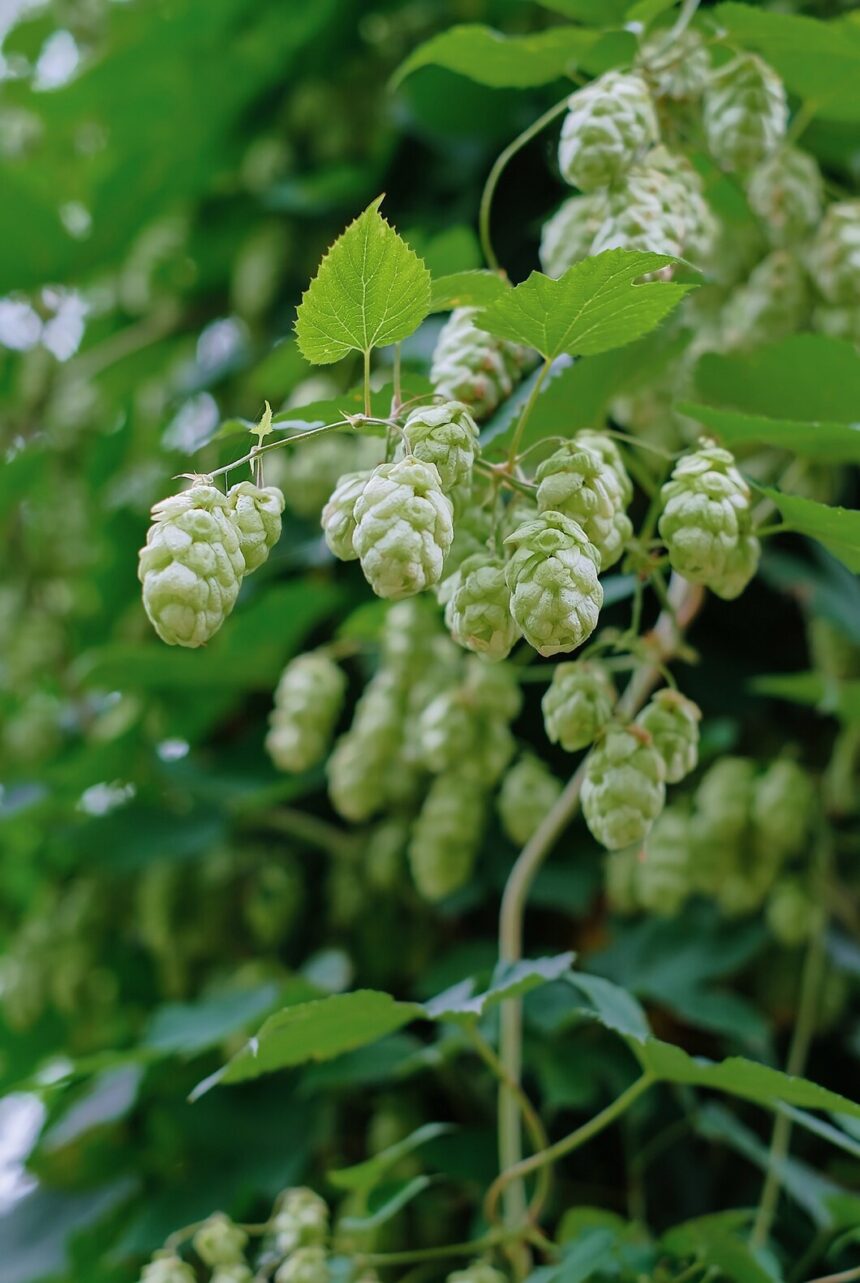Hops, vital for brewing beer, are susceptible to various diseases, including downy mildew. Recognizing the early signs of downy mildew is crucial for maintaining healthy hops and ensuring a successful harvest. Here are ten signs to watch out for:
- Yellow Spots on Upper Leaf Surface: Look for small, yellowish spots on the upper surface of hop leaves. These spots can vary in size and often appear irregular in shape.
- White Fuzz or Patches on Underside: Check the underside of leaves for a white, downy growth. This fuzzy appearance is a characteristic symptom of downy mildew.
- Leaf Curling: Infected leaves may begin to curl or twist. This distortion is often accompanied by other symptoms like yellowing or browning of affected areas.
- Stunted Shoots: Growth of hop shoots may become stunted or distorted. This can affect the overall health and yield of the plant.
- Dark Spots on Cones: If your hop cones develop dark or discolored spots, especially during wet or humid weather, it could indicate downy mildew infection.
- Premature Cone Dropping: Infected plants may drop cones prematurely before they fully mature. This can lead to reduced yield and quality.
- Brown Lesions on Stems: Look for brown lesions or streaks on hop stems. These lesions can indicate the presence of the downy mildew pathogen.
- Reduced Cone Size: Infected hop cones may be smaller than normal and fail to reach their expected size due to the impact of the disease on plant health.
- Musty or Moldy Odor: Sometimes, downy mildew infections can produce a noticeable musty or moldy smell around affected plants, especially in humid conditions.
- Yellowing and Browning of Leaves: As the infection progresses, hop leaves may start yellowing, followed by browning and eventual drying out. This is a sign of severe damage to the plant tissues.
Management and Control
Early detection of downy mildew is crucial for effective management. Consider the following practices to control the spread of the disease:
- Cultural Practices: Ensure proper spacing between plants to improve air circulation and reduce humidity levels around the hop plants.
- Sanitation: Remove and destroy infected plant debris to prevent the overwintering of the downy mildew pathogen.
- Fungicide Application: Use fungicides approved for hops and follow recommended application schedules to protect plants from infection.
By promptly identifying and addressing signs of downy mildew, hop growers can protect their crops and maintain healthy plants for optimal yield and quality in brewing operations. Regular monitoring and quick action are key to managing this challenging disease effectively.
Join 'Farmers Mag' WhatsApp Channel
Get the latest Farming news and tips delivered straight to your WhatsApp
CLICK HERE TO JOIN






